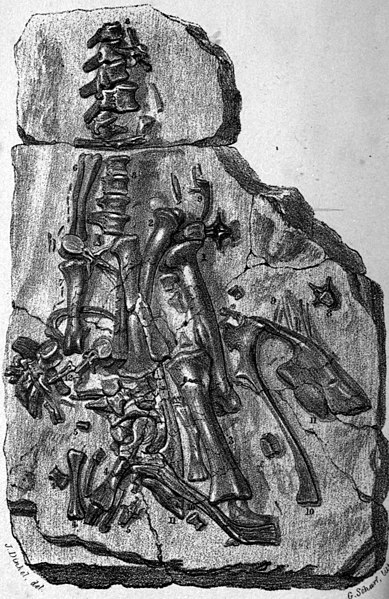Hadrosauroidea is a clade or superfamily of ornithischian dinosaurs that includes the "duck-billed" dinosaurs, or hadrosauridae, and all dinosaurs more closely related to them than to Iguanodon. Their remains have been recovered in Asia, Europe, Africa and the Americas. Many primitive hadrosauroids, such as the Asian Probactrosaurus and Altirhinus, have traditionally been included in a paraphyletic "Iguanodontidae". With cladistic analysis, the traditional Iguanodontidae has been largely disbanded, and probably includes only Iguanodon and perhaps its closest relatives.
Hadrosauroidea
Iguanodon, named in 1825, is a genus of iguanodontian dinosaur. While many species found worldwide have been classified in the genus Iguanodon, dating from the Late Jurassic to Early Cretaceous, taxonomic revision in the early 21st century has defined Iguanodon to be based on one well-substantiated species: I. bernissartensis, which lived during the Barremian to early Aptian ages of the Early Cretaceous in Belgium, Germany, England, and Spain, between about 126 and 122 million years ago. Iguanodon was a large, bulky herbivore, measuring up to 9–11 metres (30–36 ft) in length and 4.5 metric tons in body mass. Distinctive features include large thumb spikes, which were possibly used for defense against predators, combined with long prehensile fifth fingers able to forage for food.
Iguanodon
The original I. anglicus teeth from Mantell's 1825 paper
Mantell's "Iguanodon" restoration based on the Maidstone Mantellodon remains
Fossil iguanodont remains found in Maidstone in 1834, now classified as Mantellisaurus





